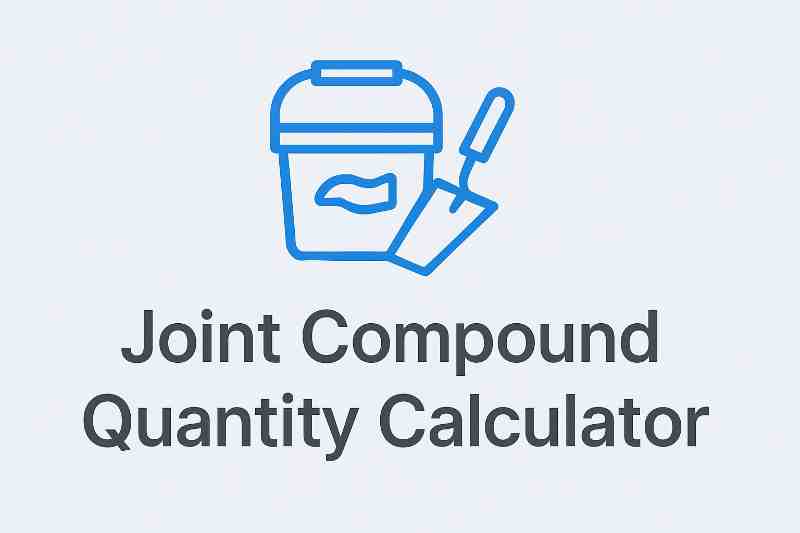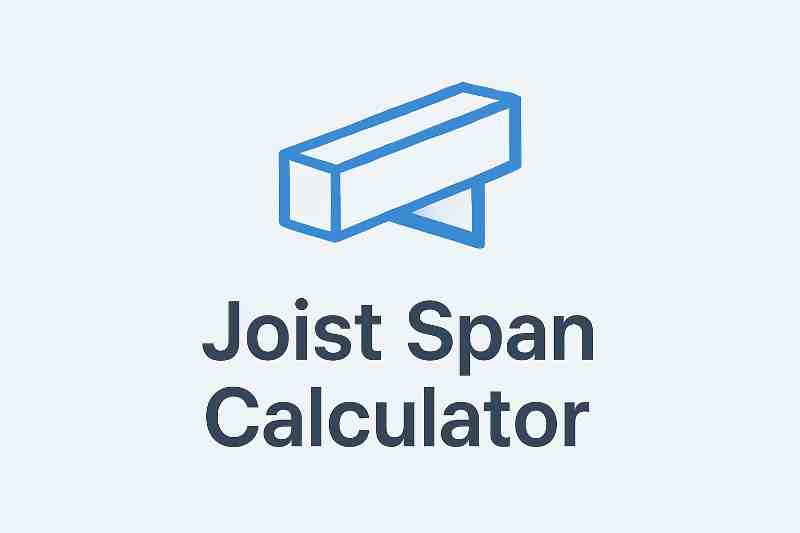Concrete Calculators
Need to calculate how much concrete your project requires? Our powerful Concrete Calculator at AskToBot.com makes it fast and easy. Whether you’re pouring a slab, footing, beam, column, or something more complex like an L-shaped slab or ring footing, this tool handles it all.
You’ll get instant volume estimates, cost calculations, and clear explanations—plus support for metric and imperial units. In this guide, we’ll cover how it works, formulas used, and tips for every concrete type you might need.
Why Accurate Concrete Calculation Matters
Getting your concrete volume right is more important than it sounds. Overestimating leads to wasted material and unnecessary costs. Underestimating can delay your project, cause weak spots, or even require expensive rework.
Whether you’re building a driveway, footing, steps, or retaining wall, accurate calculation ensures:
- Proper budgeting — Know how much concrete to order
- Minimal waste — Reduce leftovers and cost overruns
- Structural integrity — Pour the right amount for strength and safety
- Time efficiency — Avoid mid-project supply shortages
A tool like our calculator takes the guesswork out and replaces it with reliable, real-time results.
Key Features of the AskToBot Concrete Calculator
Our multi-purpose Concrete Calculator is built to handle real-world construction needs—from basic slabs to specialized shapes. Here’s what makes it one of the most flexible and user-friendly tools available:
- Supports 13+ structure types
Calculate concrete for slabs, beams, walls, columns, steps, L-shapes, ring footings, tapered pads, circular slabs, and more. - Unit system toggle
Switch between imperial (feet/inches) and metric (meters/centimeters) instantly based on your project location or preference. - Auto volume calculation
Enter dimensions, and the calculator does the math—no formulas or conversions needed. - Cost estimation
Enter your price per cubic yard or meter to instantly see total cost based on volume. - Clear explanation shown
Every result comes with a breakdown of how the volume was calculated, including formulas. - Copy to clipboard + CSV export
Easily save or share your results with team members, suppliers, or your future self. - Mobile-friendly & fast
Works smoothly on any device—phone, tablet, or desktop—with a light green, clean interface.
How to Use the Calculator Step-by-Step
Using the AskToBot Concrete Calculator is simple and intuitive. Here’s how to get accurate results in just a few clicks:
- Choose your structure type
Select from options like Slab, Footing, Column, Beam, Ring Footing, L-Slab, and more using the toggle buttons at the top. - Enter your dimensions
Input the required measurements based on your selected shape. For example:- Slab: length, width, thickness
- Column: diameter and height
- Steps: number of steps, rise, run, width
Don’t worry—the calculator shows only the fields you need.
- Switch units if needed
You can toggle between imperial (ft/in) and metric (m/cm) using the dropdown. The calculator automatically adjusts the inputs and calculations. - Add cost (optional)
Enter your cost per cubic yard (or meter) if you want an estimated total price for your concrete order. - Click “Calculate”
Instantly see the estimated volume of concrete needed, along with an optional cost estimate and a detailed formula explanation. - Export or copy your results
Use the Copy to Clipboard or Export CSV buttons to save, print, or share the calculation.
Concrete Calculation Formulas by Type
Each shape in our calculator uses real-world formulas for volume estimation. Below is a breakdown of how each type is calculated:
1. Slab (Rectangular)
Formula:Volume = Length × Width × Thickness
Example:
A slab that’s 10 ft long, 8 ft wide, and 6 inches thick (0.5 ft):10 × 8 × 0.5 = 40 cubic feet ≈ 1.48 cubic yards
2. Footing
Formula:Volume = Length × Width × Depth
Used for strip footings under walls.
3. Beam
Formula:Volume = Length × Width × Height
Used for horizontal support elements.
4. Sonotube / Column (Round)
Formula:Volume = π × (Diameter ÷ 2)² × Height
Example:
A column with a 12-inch diameter and 3 ft height:π × (6²) × 3 = ~339.29 in³ ≈ 0.20 cubic feet
5. Wall
Formula:Volume = Length × Height × Thickness
For foundation or retaining walls.
6. Steps
Formula:Volume = Number of Steps × Rise × Run × Width
7. Column (Circular)
Same as sonotube:π × radius² × height
8. L-Shaped Slab
Formula:Volume = (LengthA × WidthA + LengthB × WidthB) × Thickness
Useful for wrap-around patios or foundations.
9. Ring Footing (Annular)
Formula:Volume = π × (R² − r²) × Depth
Where R = outer radius, r = inner radius.
10. Tapered Footing / Pyramid Pad
Approx. Formula:Volume = ⅓ × Height × (TopWidth² + BottomWidth² + √(TopWidth² × BottomWidth²))
11. Trapezoidal Slab
Formula:Volume = ½ × (Top Width + Bottom Width) × Length × Thickness
12. Circular Slab
Formula:Volume = π × radius² × Thickness
13. Steps with Landing
Formula:Step Volume + Landing Volume
Steps: Steps × Rise × Run × Width
Landing: Length × Width × Height
These formulas are automatically applied behind the scenes, and your results are explained clearly after each calculation.
How to Estimate Concrete Cost
Knowing how much concrete you need is only half the job—understanding the cost helps you plan and budget your project effectively.
Our calculator includes a built-in cost estimation feature. Here’s how it works:
Step-by-Step:
- Enter the unit price
Input the cost of concrete per cubic yard (imperial) or cubic meter (metric). You can get this from a local supplier or use an average (e.g., $135/yard in the US). - Calculate
After entering your measurements and selecting the concrete type, hit “Calculate”. The calculator shows:- Total volume (e.g., 2.5 yd³)
- Estimated cost (e.g., 2.5 × $135 = $337.50)
- Use cost to plan better
This is ideal for:- Getting quotes from suppliers
- Estimating truckload size
- Preparing budgets for larger builds
Don’t forget to add 10%–15% extra to your estimate for spillage, over-excavation, or waste.
Frequently Asked Questions
How do I calculate concrete for a slab?
Multiply the length, width, and thickness of the slab. For example, a 10 ft × 12 ft slab that’s 0.5 ft thick needs 60 cubic feet (or about 2.22 cubic yards) of concrete.
How much concrete do I need for a column?
Use the formula for a cylinder: π × radius² × height. For a 12-inch diameter column that’s 3 ft tall, you’ll need about 0.79 cubic feet of concrete.
What’s the formula for a concrete footing?
Length × Width × Depth. Make sure all dimensions are in the same unit before calculating volume.
How do I calculate concrete for circular or round shapes?
Use the formula: π × (radius²) × depth. If calculating a ring footing, subtract the inner circle from the outer.
How thick should a concrete slab be?
It depends on the application. Driveways often require 4–6 inches, patios 3–4 inches, and heavy load areas may need 6+ inches.
Should I order extra concrete?
Yes, always add 10%–15% to your calculated volume to cover waste, spillage, and inconsistencies in formwork.
What’s the difference between cubic feet and cubic yards?
There are 27 cubic feet in 1 cubic yard. The calculator converts for you automatically based on your unit selection.
Can I switch between feet/inches and meters/centimeters?
Yes! The calculator lets you toggle between imperial and metric systems depending on your project location.
Can I use this calculator for stairs with landings?
Absolutely. Just select the “Steps + Landing” type and enter both the stair and landing measurements.
Conclusion
Accurately calculating concrete volume is essential to keep your project on budget, on time, and structurally sound. With the versatile AskToBot Concrete Calculator, you can quickly estimate the amount of concrete needed for a wide range of structures—from simple slabs to complex shapes like ring footings and tapered footings.
Whether you’re a professional builder or a DIY enthusiast, this tool removes guesswork and simplifies planning. Try it out today to ensure you order just the right amount of concrete every time.
Don’t forget to explore our other construction calculators to make your projects even smoother and more efficient.



